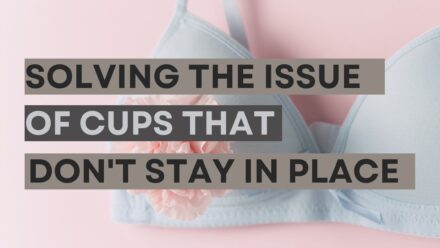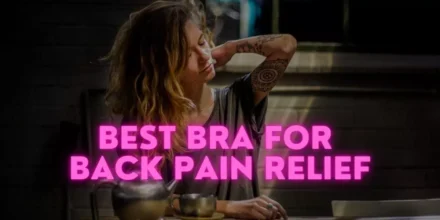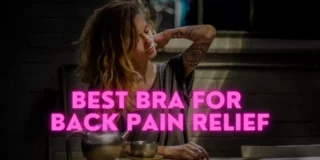Hey there! Raise your hand if you’ve ever experienced the sheer frustration of a bra strap slipping off your shoulder. We’ve all been there, right?
It can completely throw off your day, no matter how fabulous your outfit is. But what if we told you that the problem isn’t the strap itself?
This guide will go beyond the obvious fixes and dive deep into the real reasons why your bra straps won’t stay up.
We’ve taken your common questions and provided expert-level answers, giving you the most comprehensive and actionable advice you’ll ever need.
Get ready to bid farewell to those pesky strap slip-ups and say hello to a whole new level of bra comfort and confidence.

Part 1: The Core Problem—It’s All About the Fit
Most of the time, a slipping bra strap is a warning sign of a much bigger problem: your bra doesn’t fit you correctly. A bra’s support comes from a specific part, and it’s not the straps. Let’s start with the golden rule of bra fitting.
The Golden Rule of Bra Fitting: The Band Is Everything
Bra fitters agree: the band provides 90% of a bra’s support. The straps are only meant to provide the remaining 10%, offering just enough tension to help the cups sit smoothly and securely.
If your straps are constantly slipping, it’s highly likely that your bra band is too loose. A loose band can’t do its job of holding the bra in place, so the straps have to overcompensate. This is why you might find yourself tightening the straps until they dig in, only for them to slip a few minutes later. They’re trying to do a job they were never designed for.
How to Check Your Band Fit
The easiest way to tell if your band is too loose is by doing a quick check. Stand sideways in a mirror. A correctly fitting band should be snug and level all the way around your torso. It should not ride up in the back at all.
- The Two-Finger Rule: With your bra on, you should be able to fit two fingers, but no more, comfortably underneath the band at the center of your back. If you can fit more than two fingers, or if the band feels loose, it’s a clear sign that you need a smaller band size.
The Cups: A Surprising Culprit
It might seem counterintuitive, but cups that are too large can also cause your straps to slip. When the bra cups are too big, they can gape or wrinkle, especially at the top. This creates an unstable fit, and the lack of tension allows the straps to slide down your shoulders.
You can check for gaping by doing the “scoop and swoop.” After putting on your bra, lean forward and use your hand to scoop all your breast tissue from under your armpit and from the bottom of the cups into the cups. If the cups still have empty space at the top after this, they are too big.
The Fix: If your bra band is too loose, you need to size down the band. For example, if you’re wearing a 36C, try a 34D. If your cups are gaping, you need to size down the cups. For example, if you’re wearing a 36C and the cups are too big, try a 36B.
Part 2: Body and Posture—When Your Anatomy Is the Cause
Sometimes, even with a perfectly fitted bra, straps can still slip due to your body’s unique shape. This is absolutely nothing to worry about; your body is amazing! You just need to find bra styles that work with your specific anatomy.
Short Torso and Sloping Shoulders
Ashort torso can be a factor. A standard bra’s straps might be too long for your body, leading to slipping. This is often related to having sloping shoulders, where the shoulders are naturally more angled or narrow. A standard bra strap is positioned wide on the chest and can easily slide down this type of shoulder.
The Solution: The key is to find bra styles with straps that are positioned closer together in the back, creating a more secure fit.
- Racerback Bras: The straps form a “Y” or “V” in the back, pulling them toward the center and away from your shoulders. This is a very effective style for people with sloping shoulders.
No products found.
- T-Back and U-Back Bras: These styles have a similar effect to the racerback, with the straps connecting at the center of the back to prevent slipping.
Minor Scoliosis and Asymmetrical Bodies
It is very common for a woman’s body to be slightly asymmetrical. One shoulder might be lower than the other, or one breast might be slightly larger. For those with minor scoliosis (a sideways curvature of the spine), this can be more pronounced. This unevenness can cause a strap to consistently slip on one side.
The Solution: Look for bras with straps that can be adjusted to different lengths.
- Fully Adjustable Straps: Make sure the bra you buy has sliders that allow you to shorten one strap more than the other.
No products found.
- Convertible Bras: These bras have detachable straps that can be worn in multiple ways, including crossed in the back. Crossing the straps provides extra support and can help with asymmetry.
Part 3: When the Bra Itself Is the Problem
Sometimes, the issue isn’t you—it’s the bra. Bra quality and age play a significant role in how well your straps stay put.
Old, Worn-Out Bras
It’s important to change your innerwear every now and then. Over time, the elastic in the bra band and straps loses its stretch due to repeated washing and wearing. Once the elastic is stretched out, the bra can no longer provide the necessary support. An old, loose band is a recipe for slipping straps.
The Fix: The only solution for an old, worn-out bra is to replace it. A good quality bra, with proper care, should last around 6 to 12 months with regular use.
Low-Quality Materials
Cheaper bras often use low-quality materials that wear out quickly. The small metal or plastic sliders on the straps can also be poorly made, causing them to slip and loosen on their own throughout the day.
The Fix: Investing in higher-quality bras is the best way to ensure the elastic and hardware are durable.
Part 4: The Ultimate Action Plan to Find the Right Bra
Now that you know the reasons, here is a simple, step-by-step plan to help you find a bra that will solve your slipping strap problem for good.
Step 1: Get a Professional Bra Fitting
This is the most accurate and effective way to find your true bra size. Many lingerie boutiques and department stores offer this service for free. A trained fitter can assess your unique body shape, measure you correctly, and recommend the best styles for you. Don’t be shy—this is what they do all day!
Step 2: Pay Close Attention During the Try-On
When you’re trying on bras, forget the size on the label for a moment. Focus on these three key areas:
- The Band: Make sure the band is snug and level, with no more than two fingers fitting underneath.
- The Cups: Do the scoop and swoop. Ensure there is no gaping, wrinkling, or overflow.
- The Straps: Once the band and cups are perfect, adjust the straps. They should feel secure but not be so tight that they’re digging into your shoulders.
Step 3: Choose the Right Bra Style
- For Sloping Shoulders: Look for T-back, U-back, or racerback bras. These styles are designed to keep the straps positioned centrally on your back.
- For Asymmetrical Bodies: A convertible bra with detachable straps is a great investment. You can adjust the straps to different lengths or wear them crossed for a custom fit.
- For Added Support: For larger chests, consider a bra with wider, padded straps to better distribute weight and reduce pressure on the shoulders.
Step 4: Don’t Be Afraid to Get a Bra Altered
If you find a bra with a perfect band and cup fit, but the straps are still an issue, consider getting it altered. A professional seamstress can shorten the straps or even reposition them slightly to fit your unique shoulder shape. It’s a small investment for a lifetime of comfort.
Tips & Tricks: Solutions for When You’re On the Go
While the solutions above are for the long term, sometimes you need a quick fix. Here are some of the best hacks to keep your straps in place.
- Bra Clips or Converters: These small clips are a quick and easy way to pull your straps together in the back, instantly creating a racerback style. They are a must-have for your lingerie drawer.
No products found.
- The Paperclip Trick: In a pinch, a simple paperclip can be used to clip your straps together in the back.
- Double-Sided Tape: For delicate or special outfits, a small piece of double-sided fashion tape can be used to secure your bra strap to your skin or to your clothing.
No products found.
- Sewing Bra Cups into a Dress: For backless or low-cut dresses, a common hack is to sew the cups from an old bra directly into the dress. This provides support and coverage without the need for straps.
Conclusion: Your Bra, Your Confidence
The constant struggle with slipping bra straps is more than a minor annoyance—it’s a symptom of a bra that is failing to support you properly. By shifting your focus from the straps to the band, understanding your body’s unique shape, and investing in a high-quality, well-fitting bra, you can permanently solve the problem.
Finding the right bra can be a truly transformative experience. It will not only improve your physical comfort but also your overall confidence. Remember, you have the knowledge and tools to get to the root of the problem. Take the time to find a bra that supports you, and you will feel more comfortable and confident than ever before.








